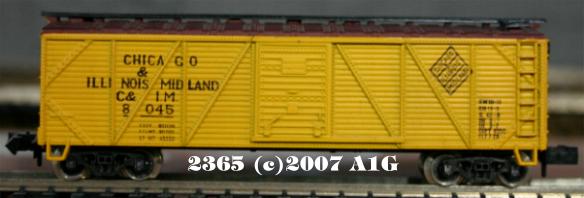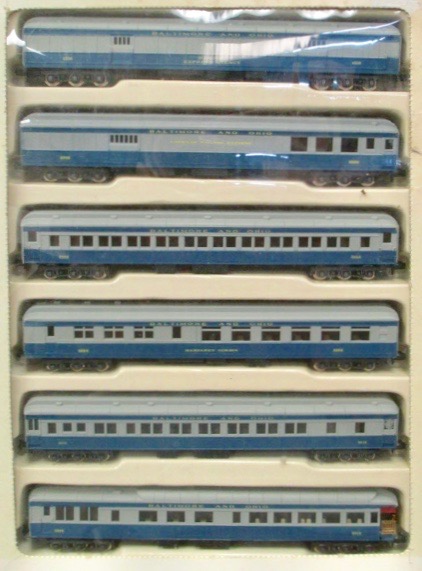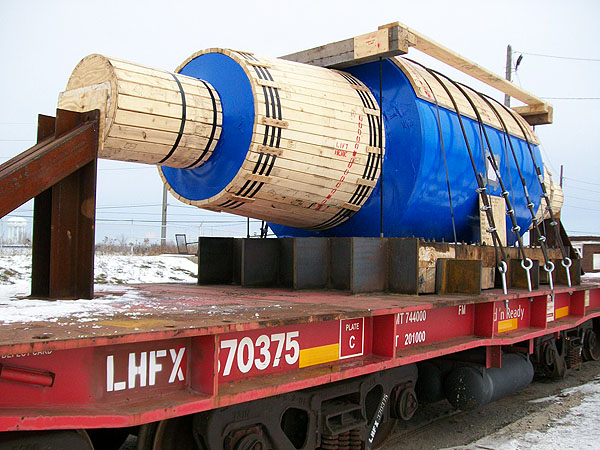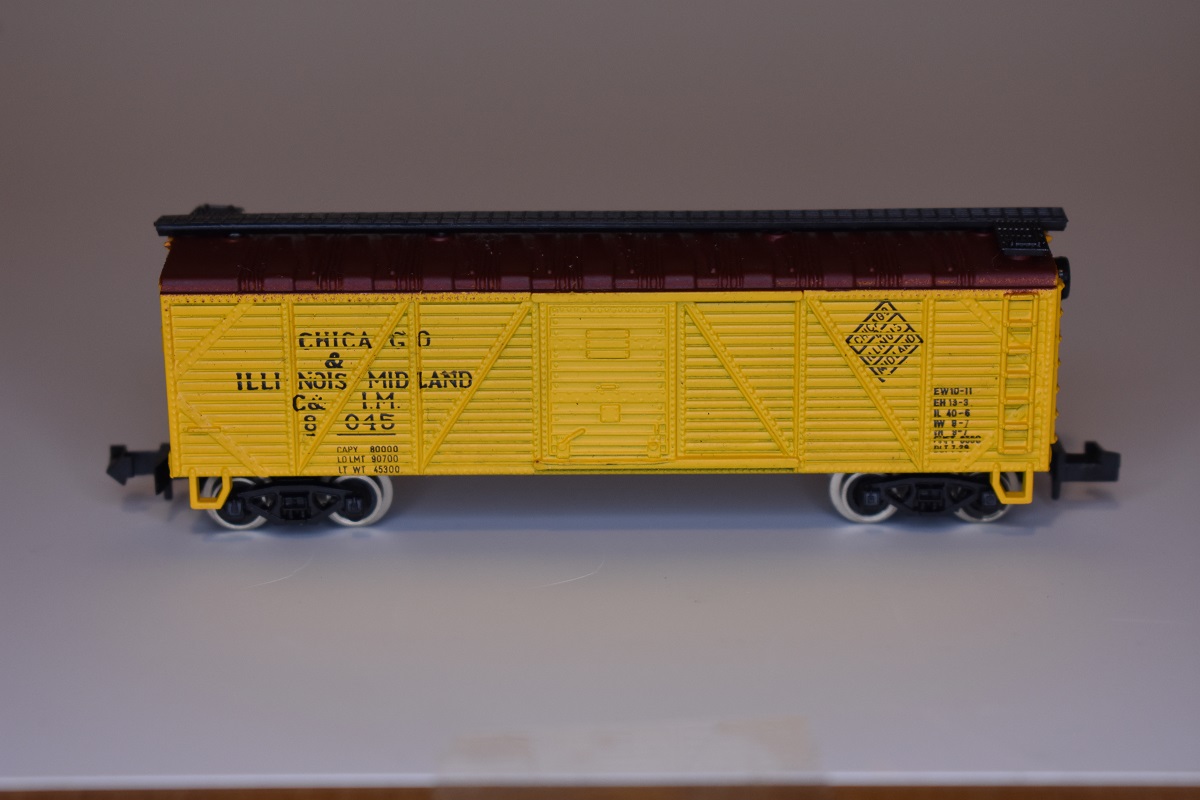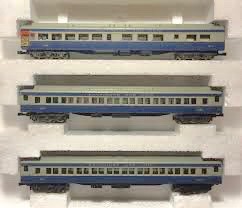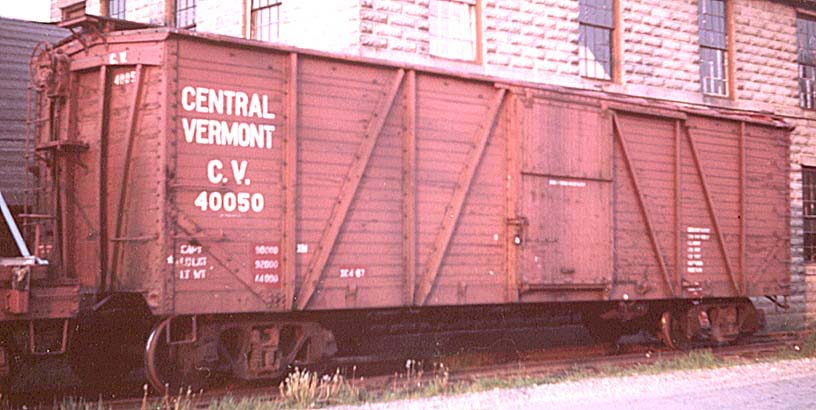Model Information: This model was originally developed by Mehano for Atlas to replace the Atlas 40' composite boxcar tooling. It is a knockoff of the Roco tooling. It is so similar that I suspect Mehano obtained the rights to the Roco tooling with Atlas' help. It has also been produced for MRC, Life-Like and Model Power. It has been through at least one minor revision to improve the molded detail on the shell. It carries Nickel-Silver plated deep flange wheels and a Rapido coupler.
Prototype History: The outside braced single sheathed box car proved to be a significant development in railway freight car technology in North America. Thousands of them saw use on North American railways beginning in the late 19th century through the 1960s. They carried bulk products such as grain and coal. They also carried packaged or bagged lading referred to as clean lading. While most of the outside braced cars were built for general service, some were built specifically to carry machinery and automobiles. For forty years freight trains on the prairies and indeed all across the country consisted of long lines of outside braced boxcars. They could commonly be found at elevators and loading platforms in communities small and large. They dominated railway yard scenes well into the 1940s.
The use of steel for the under frame (center and side sills), side and end frames initiated a new form of railway freight car building technology. Steel center sills and other under sill framing gave the cars the strength necessary to withstand the stress of longer and faster trains as well as the considerable stress involved in the contact necessary to activate closure of the knuckle coupler while being made up into trains in rail yards or from being picked up from local sidings along the line. The steel frame and the single wood side sheath minimized the weight of the car. This type of car design led to easy construction and repair. Its initial construction cost was low. The design provided secure joints between sides, ends and floors which prevented grain leakage.
The use of steel for the under frame (center and side sills), side and end frames initiated a new form of railway freight car building technology. Steel center sills and other under sill framing gave the cars the strength necessary to withstand the stress of longer and faster trains as well as the considerable stress involved in the contact necessary to activate closure of the knuckle coupler while being made up into trains in rail yards or from being picked up from local sidings along the line. The steel frame and the single wood side sheath minimized the weight of the car. This type of car design led to easy construction and repair. Its initial construction cost was low. The design provided secure joints between sides, ends and floors which prevented grain leakage.
Road Name History: 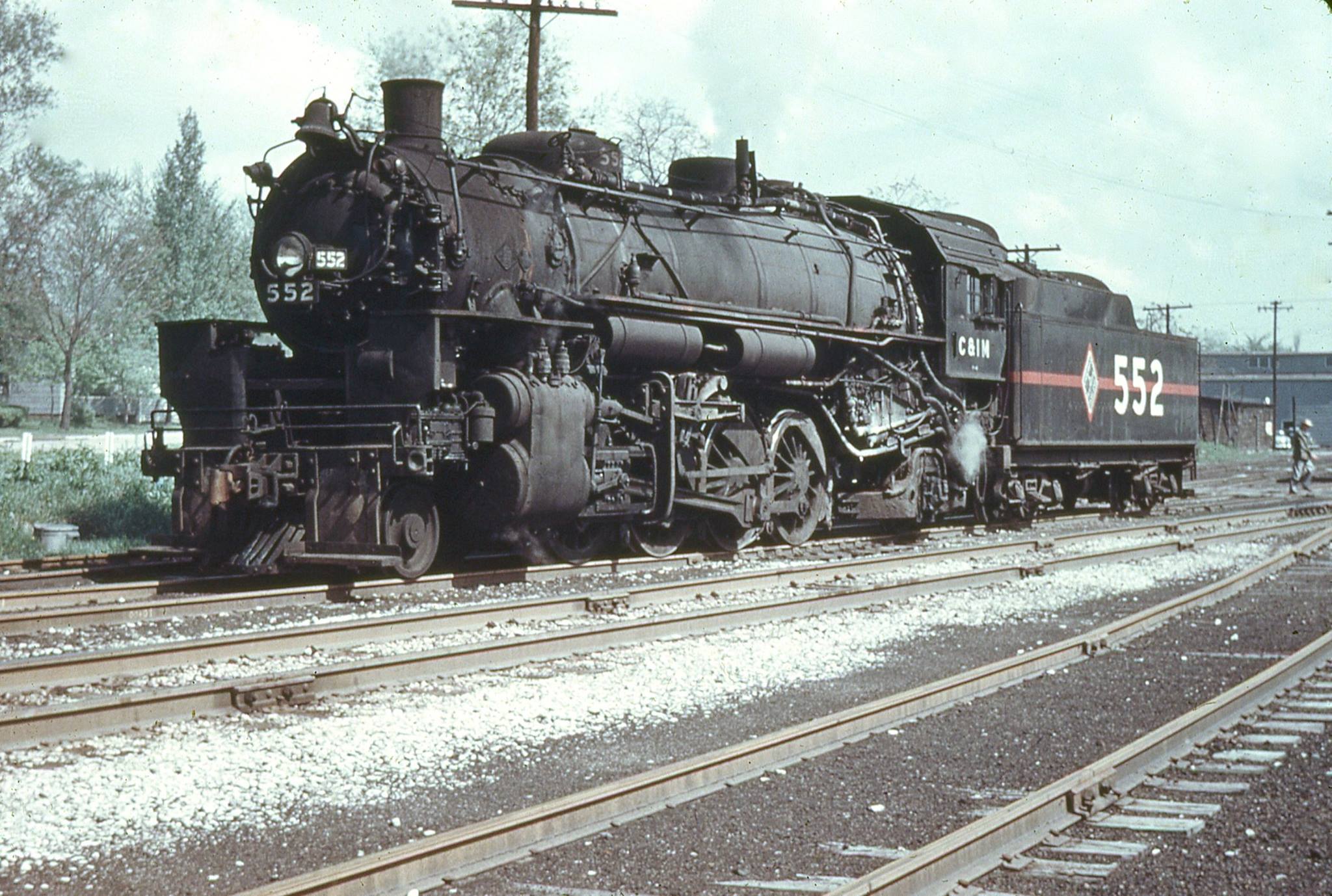 The Chicago & Illinois Midland ran from Peoria south to Springfield (the state capital) and Cimic, then east to Taylorville, Illinois. Total mileage was around 120 (7 miles longer than RF&P by comparison.) For much of its history, the C&IM was owned by utility giant Commonwealth Edison. Most of the traffic was coal. Over the years, coal has moved from mines along the south end of the line to Illinois River docks at Havana and to other carriers at Peoria. As Wyoming coal became more popular, coal moved from connections at Peoria to the docks at Havana.
The Chicago & Illinois Midland ran from Peoria south to Springfield (the state capital) and Cimic, then east to Taylorville, Illinois. Total mileage was around 120 (7 miles longer than RF&P by comparison.) For much of its history, the C&IM was owned by utility giant Commonwealth Edison. Most of the traffic was coal. Over the years, coal has moved from mines along the south end of the line to Illinois River docks at Havana and to other carriers at Peoria. As Wyoming coal became more popular, coal moved from connections at Peoria to the docks at Havana.
C&IM was the last Class 1 railroad to order 4-4-0s. A trio of them were built by Baldwin in 1927 and ’28. Later in the steam era, C&IM bought second hand 2-10-2s from Wabash and Atlantic Coast Line as coal traffic increased. We tend to believe that the “Steam to Diesel Transition Era” unfolded over a long period with the first switchers and streamliners arriving in the late 1930s and the last steam road power retiring around 1957 or so. C&IM was unusual in that it remained all-steam through 1954. When they did switch, it was with a suddenness that could strike panic in the hearts of steam fans. The first EMD switchers arrived in early 1955. Then, in the third week of November, the first SD9 arrived on the property. Within FIVE DAYS steam was gone from the C&IM mainline, leaving a few 0-8-0’s in yard service. On December 5th, the 0-8-0’s were gone too.

C&IM was the last Class 1 railroad to order 4-4-0s. A trio of them were built by Baldwin in 1927 and ’28. Later in the steam era, C&IM bought second hand 2-10-2s from Wabash and Atlantic Coast Line as coal traffic increased. We tend to believe that the “Steam to Diesel Transition Era” unfolded over a long period with the first switchers and streamliners arriving in the late 1930s and the last steam road power retiring around 1957 or so. C&IM was unusual in that it remained all-steam through 1954. When they did switch, it was with a suddenness that could strike panic in the hearts of steam fans. The first EMD switchers arrived in early 1955. Then, in the third week of November, the first SD9 arrived on the property. Within FIVE DAYS steam was gone from the C&IM mainline, leaving a few 0-8-0’s in yard service. On December 5th, the 0-8-0’s were gone too.
Brand/Importer Information:  Life-Like Products LLC (now Life-Like Toy and Hobby division of Wm. K. Walthers) was a manufacturer of model railroad products and was based in Baltimore, Maryland.
Life-Like Products LLC (now Life-Like Toy and Hobby division of Wm. K. Walthers) was a manufacturer of model railroad products and was based in Baltimore, Maryland.
It was founded in the 1950s by a company that pioneered extruded foam ice chests under the Lifoam trademark. Because ice chests are a summer seasonal item, the company needed a way to keep the factory operating year round. As model railroading was becoming popular in the post-war years, they saw this as an opportunity and so manufactured extruded foam tunnels for model trains. Over the years, Life-Like expanded into other scenery items, finally manufacturing rolling stock beginning in the late 1960s. At some point in the early 1970s, Life-Like purchased Varney Inc. and began to produce the former Varney line as its own.
The Canadian distributor for Life-Like products, Canadian Hobbycraft, saw a missing segment in market for Canadian model prototypes, and started producing a few Canadian models that were later, with a few modifications, offered in the US market with US roadnames.
In 2005, the company, now known as Lifoam Industries, LLC, decided to concentrate on their core products of extruded foam and sold their model railroad operations to Wm. K. Walthers.
In June 2018, Atlas and Walthers announced to have reached an agreement under which all Walthers N scale rolling stock tooling, including the former Life-Like tooling, will be purchased by Atlas.
Read more on Wikipedia and The Train Collectors Association.

It was founded in the 1950s by a company that pioneered extruded foam ice chests under the Lifoam trademark. Because ice chests are a summer seasonal item, the company needed a way to keep the factory operating year round. As model railroading was becoming popular in the post-war years, they saw this as an opportunity and so manufactured extruded foam tunnels for model trains. Over the years, Life-Like expanded into other scenery items, finally manufacturing rolling stock beginning in the late 1960s. At some point in the early 1970s, Life-Like purchased Varney Inc. and began to produce the former Varney line as its own.
The Canadian distributor for Life-Like products, Canadian Hobbycraft, saw a missing segment in market for Canadian model prototypes, and started producing a few Canadian models that were later, with a few modifications, offered in the US market with US roadnames.
In 2005, the company, now known as Lifoam Industries, LLC, decided to concentrate on their core products of extruded foam and sold their model railroad operations to Wm. K. Walthers.
In June 2018, Atlas and Walthers announced to have reached an agreement under which all Walthers N scale rolling stock tooling, including the former Life-Like tooling, will be purchased by Atlas.
Read more on Wikipedia and The Train Collectors Association.
Manufacturer Information: Mehano is a Slovenian toy manufacturer located in Izola, Slovenija. The company was founded as Mehanotehnika and was producing toys starting in June 1953. They first exhibited at the Nuerenberg Toy Fair in 1959. Mehano produced a number of different locomotives and rolling stock models for the North American market in the 1960s and 1970s. Companies such as Atlas and Life-Like imported a huge variety of their products. Generally they can easily be recognized as they are stamped "Yugosolavia" on the underframe. The company was formally renamed "Mehano" in 1990. Izola today is part of the country of Slovenia since the breakup of Yugoslavia.
Mehano filed for bankruptcy in 2008, but still continued to exist and operate. Since 2012, Mehano products are distributed by Lemke.
Mehano filed for bankruptcy in 2008, but still continued to exist and operate. Since 2012, Mehano products are distributed by Lemke.
Item created by: gdm on 2017-04-02 14:11:24. Last edited by gdm on 2020-07-24 07:28:55
If you see errors or missing data in this entry, please feel free to log in and edit it. Anyone with a Gmail account can log in instantly.
If you see errors or missing data in this entry, please feel free to log in and edit it. Anyone with a Gmail account can log in instantly.





